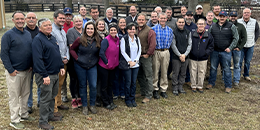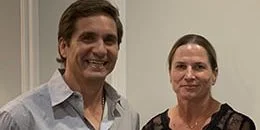Surgical Services are available at all three of our hospitals: Lexington, Saratoga & Wellington.
Rood & Riddle’s name is synonymous with outstanding surgical expertise. Our board-certified surgeons are among the most respected in the world for their skills and development of innovative procedures, techniques and advances in equine surgery. Each surgeon is skilled in multiple disciplines and concentrates on one or more areas, which gives our clients a high degree of proficiency in a wide range of surgical services. Our board-certified anesthesiologist is widely respected and helps train our anesthesia personnel for all three of our hospitals.
Our surgery team has extensive experience with elective orthopedic and soft tissue procedures and emergency disorders of the abdomen, upper airway and reproductive and musculoskeletal systems. By combining modern facilities, equipment and protocols with well-trained personnel, our surgical staff is able to achieve the best possible results for soft tissue and orthopedic cases. When needed, surgeons consult with the other Rood & Riddle clinicians who are also recognized as experts and leaders in their fields of internal medicine, neurology, neonatology, cardiology, ophthalmology, dentistry, reproduction and podiatry to provide complete medical care for each patient.
As leaders in professional organizations such as the American College of Veterinary Surgeons, American Association of Equine Practitioners and Association for the Study of Internal Fixation (Fracture Repair), our surgeons annually lead courses that train current and future equine surgeons in techniques of upper airway surgery and fracture repair in the horse. They recognize the best way to improve themselves, the veterinary profession and the care of your horse are through their involvement with professional equine associations. They are fully committed to professional service and the advancement of equine surgery.
Lameness exams have become a large part of the caseload managed by many of our surgeons. Horses of different breeds, and performing in different disciplines, are referred to our hospitals to determine the cause of lameness. The cause can be determined by careful observation, flexion tests, local anesthetic nerve and joint blocks, radiographs and often ultrasound exams; however, other imaging modalities are often needed and may include nuclear scintigraphy, MRI, CT or PET scans. An accurate diagnosis is important to provide the best recommendations to resolve the problem.










As a worldwide leader in equine healthcare, we provide expertise for our patients in a caring, professional and ethical manner that creates value for the entire equine community.

2023 Lexington Shareholders

2023 Saratoga Shareholders

2023 Wellington Shareholders